Katzhagen - Archive - May 2013
Multimedia, an OP and whiff of springtime
The past weeks were quite busy in respect to various topics around the garden railway which nearly caused these pages to be forgotten...
Roll it! Or: MyLGB TV
For quite a long time I had been thinking about acquiring an IP-camera for the garden railway in order to use it together with the control's browser interface as a remote control. Since more or less reasonable IP-cameras (f.i. Mobotix) cost a little fortune I refrained from this idea. Until... ELV came up with a seemingly propitious camera set a couple of weeks ago:

The cameras (720x576 pixels) were mounted beneath the
balcony and overlook the unstopped parts of the layout
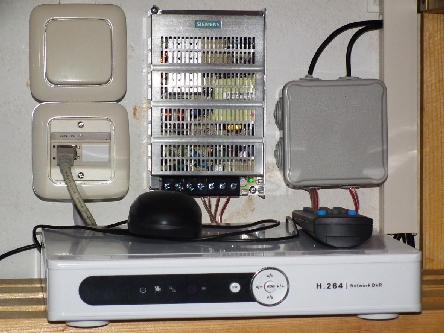
Digital recorder with network access and a central
power supply for both the recorder and the cameras
The full-bodied advertisements of ELV relativized on the devices' initial operation:
- Using Micro$oft's Internet Explorers Active-X is required, disputable under security aspects
- Usage of the recorder's QuickTime stream with other browers is possible only when opening further ports
- The cameras' power supplies are outrageous (supply noise) and result in interferences
Remedy regarding the power supply was found in from of a Siemens Sitop power supply (12V/8.3A - see picture on the upper right), which all of the devices are perfectly happy with.

Partial view of the layout - screen shot by Keith Yundt, Canada

R/C train control using a webbrowser
A first comprehensive test of this setup under real operating conditions
was done early in May together with my friend Keith from Canada. Keith
fired up his Mac and opened a browser window for the image transmission
and second browser window for controlling a train. This worked perfectly
well out of the box and we rode trains alternately. First Keith started
the train hauled by 994652 in the above picture from his Mac in Canada.
Then 99201 was started locally to haul a freight train. This way we alternately
ran trains for almost an hour - Keith in front of his Mac near the Canadian
west coast and my humble self in the garden in Northern Germany. This was
really great fun !
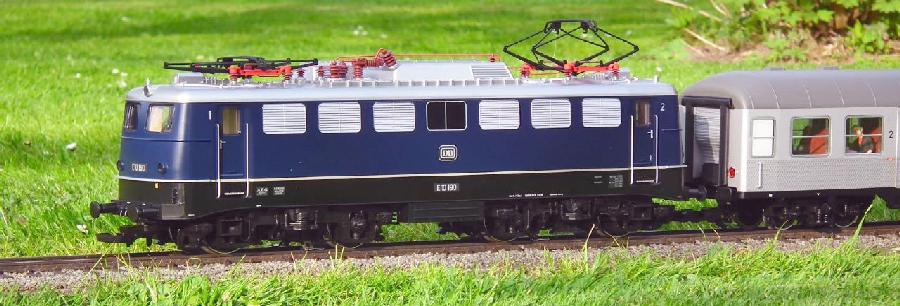
The new E10's first test drive proceeds without problems and reveals some reasons why the model is low priced. The pantographs are made from plastic, details are part of the mould instead of being separate, the illumination is rudimentary and the mechanical soundscape replaces a sound module out of the box. Furthermore a mode switch and a driver figure are missing. Nevertheless, the engine makes a good optical impression.
Opening the model's body shell the jaw hits the ground - a collection of soldered bell wire instead the known wiring equipped with plugs. Nurse !? - Swab !
Obstetrics - The new E10 on the OP table

The new E10's first test drive proceeds without problems and reveals some reasons why the model is low priced. The pantographs are made from plastic, details are part of the mould instead of being separate, the illumination is rudimentary and the mechanical soundscape replaces a sound module out of the box. Furthermore a mode switch and a driver figure are missing. Nevertheless, the engine makes a good optical impression.
Opening the model's body shell the jaw hits the ground - a collection of soldered bell wire instead the known wiring equipped with plugs. Nurse !? - Swab !
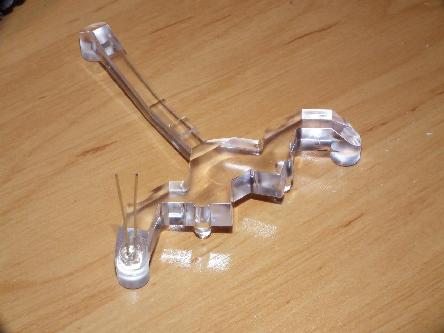
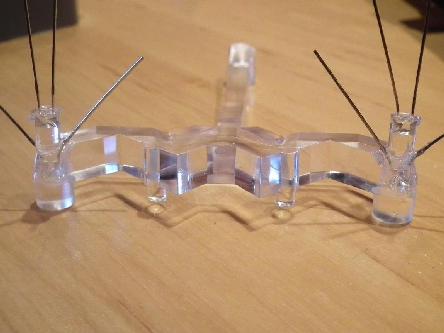
First both of the ex-factory LEDs were removed and the headlight light guides
were equipped with three white and two red clear housing LEDs (5mm) each.
This was done by drilling suitable holes into the light guides and mounting
the LEDs using a clear two-component glue.
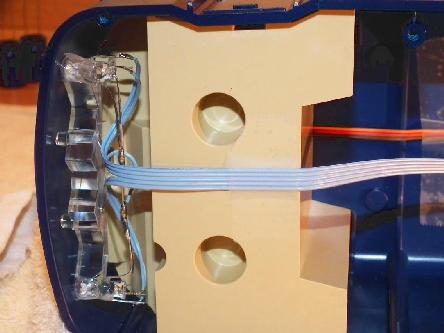
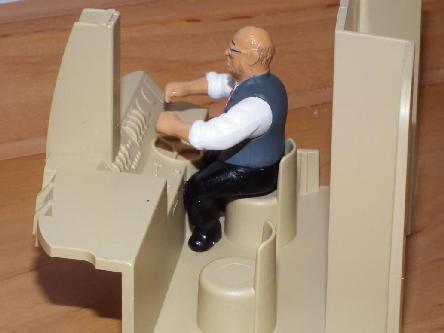
Ribbon cable was used for the LEDs wiring to minimize potential disorder.
Both the upper headlights and the cabin illumination got a separate cable
due to space issues.
Piko's figure of Doc Wilfer seems to feel pretty comfortable with his new seat - after having deserved an artificial achondroplasia.
A simple starting delay made from eight diodes (four pairs of antiparallel connected diodes in series) provides for an illumination while the engine is standing still on the tracks at a voltage of 3 to 6V DC. Furthermore a switch was added to insulate the motors from the track. This way the engine can be parked illuminated.
Piko's figure of Doc Wilfer seems to feel pretty comfortable with his new seat - after having deserved an artificial achondroplasia.
A simple starting delay made from eight diodes (four pairs of antiparallel connected diodes in series) provides for an illumination while the engine is standing still on the tracks at a voltage of 3 to 6V DC. Furthermore a switch was added to insulate the motors from the track. This way the engine can be parked illuminated.
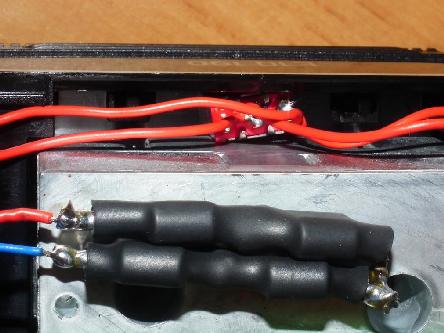
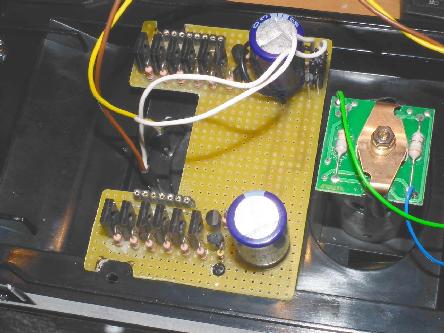
After mounting the current-stabilized and buffered light control the ex
factory wiring was replaced with more flexible wires with a cross section
of 0.75sqmm. Of course the new cables were equipped with plugs...
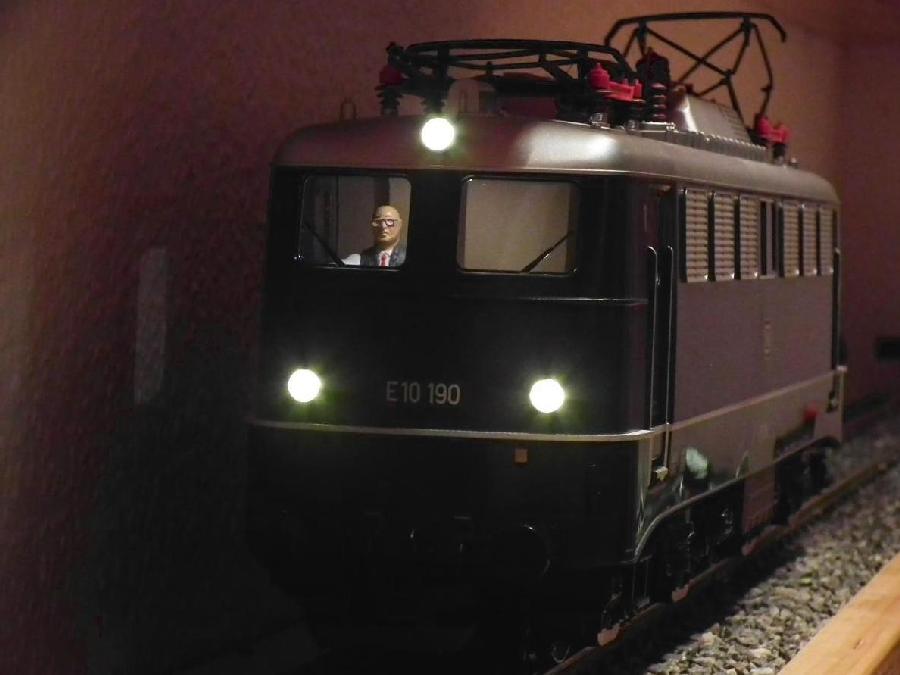
Illumination changing from white to red and vice cersa depending upon the direction - already working at 3V.
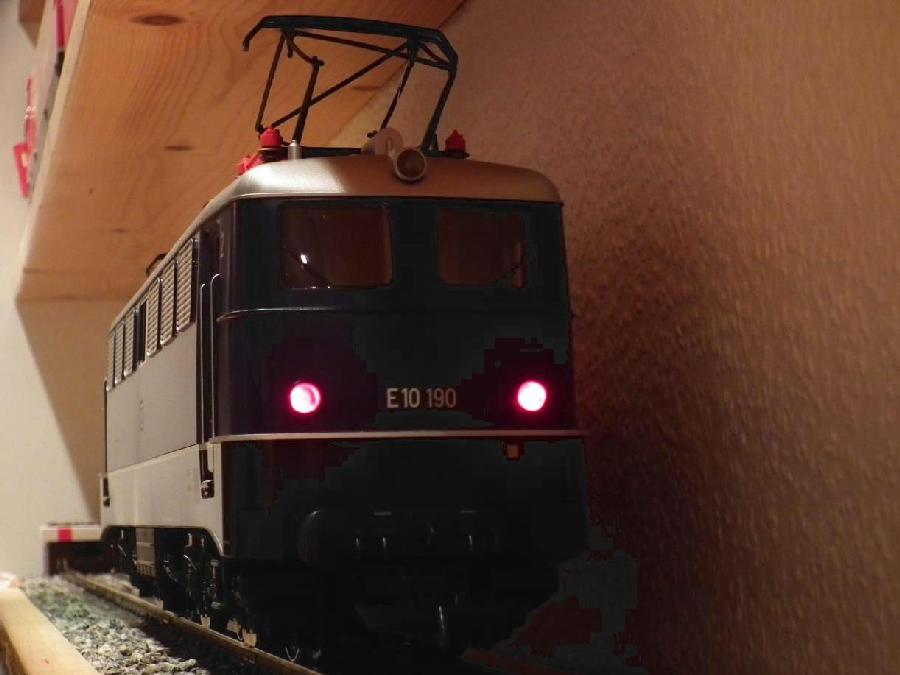
A worthy end - OP successful, patient running.
And now...
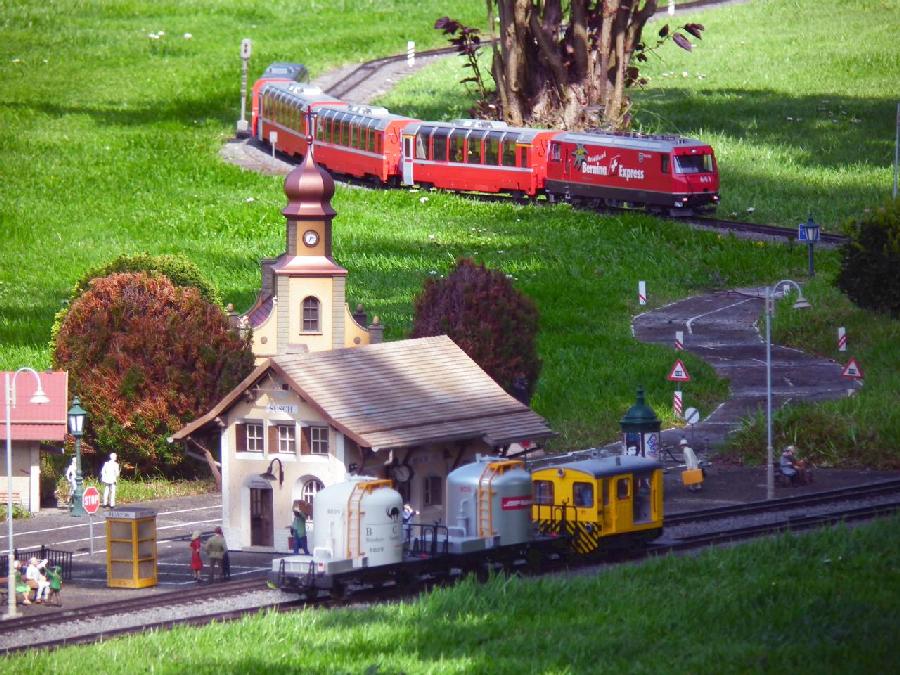
Tm2/2 92 is waiting for the Bernina Express to arrive at Susch so that it can continue its journey - If there only were more sunshine these days !
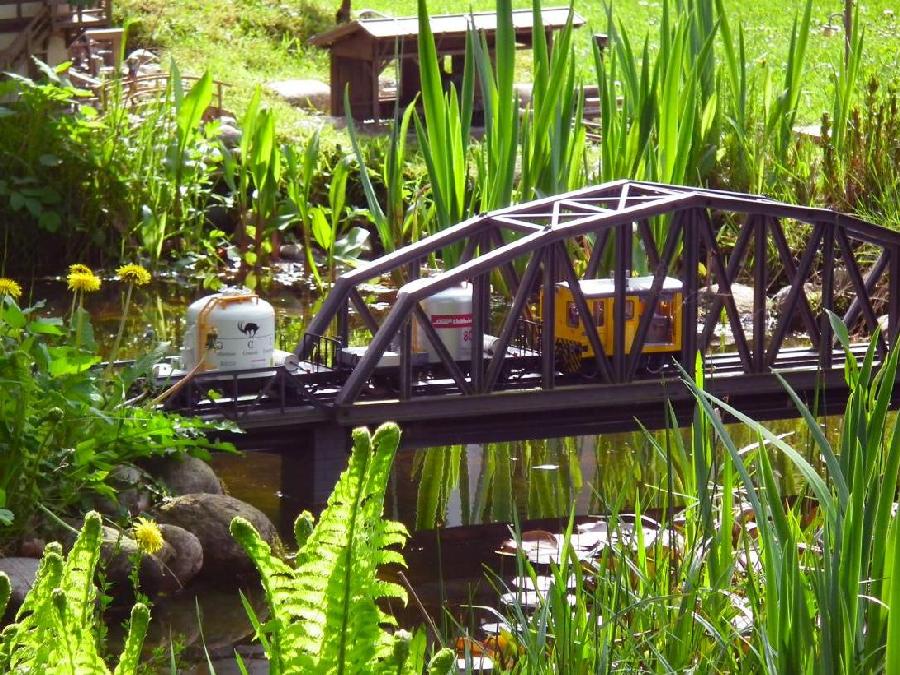
A train being shorter than half of the bridge's length - a rare picture ...

Illumination changing from white to red and vice cersa depending upon the direction - already working at 3V.

A worthy end - OP successful, patient running.
And now...

... a whiff of springtime !

Tm2/2 92 is waiting for the Bernina Express to arrive at Susch so that it can continue its journey - If there only were more sunshine these days !

A train being shorter than half of the bridge's length - a rare picture ...

